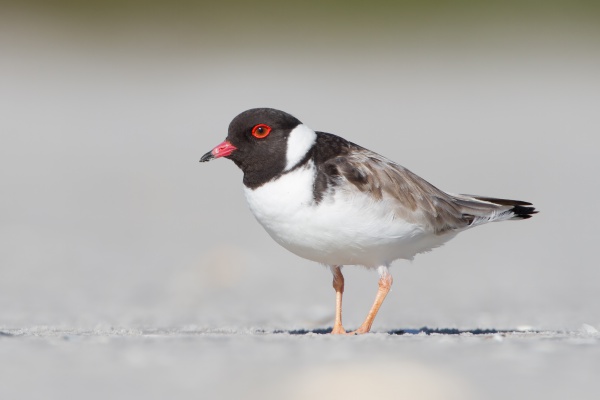Facts About Hooded dotterel
The hooded dotterel, also known as the hooded plover, is an endearing bird native to southern Australia and Tasmania. Typically, you can spot these birds on ocean beaches and around subcoastal lagoons. There are two subspecies of the hooded dotterel, with the eastern one facing more severe conservation challenges than its western counterpart. Indeed, the eastern subspecies is listed as Vulnerable in some areas and Critically Endangered in others.
Initially, the hooded dotterel was classified under the genus Charadrius but was later reassigned to the genus Thinornis, along with the shore plover. As of the year 2000, there were about 7,000 mature hooded dotterels remaining. These medium-sized birds are quite recognizable, with their black hoods, white collars, red bills tipped with black, and orange legs.
From August to March, hooded dotterels lay 1-3 eggs, often encountering threats from human activities, predators like silver gulls and ravens, and habitat loss. Their diet mainly consists of invertebrates, and they are often seen in pairs or small groups near water bodies.
Their natural habitats include freshwater lakes, marshes, coastal saline lagoons, and sandy beaches. They are non-migratory birds and reside in the coastal and subcoastal regions of Western Australia, South Australia, New South Wales, Victoria, and Tasmania, with occasional sightings in Queensland.
Given their declining population and limited range, conservation efforts for the hooded dotterel are essential. BirdLife International has identified key areas as Important Bird Areas to help protect this species. These birds face numerous threats, including human disturbance, predation, and habitat loss, making conservation measures crucial to their survival.
